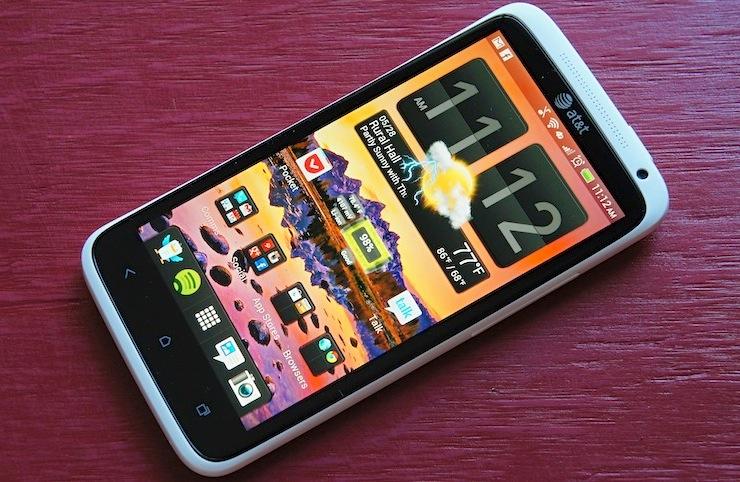
Considering the vast majority of smartphones look a lot alike, manufacturers are digging deep for that key differentiating feature that makes consumers want their devices. Some of these features, however, are noticeably more viable than others.
Nokia, for example, is making leaps and bounds in the mobile image sensing department with PureView. The Nokia 808 PureView featured a 41-megapixel camera which boasted optical zoom and effective 38-megapixel shots. Then with the Nokia Lumia 920, the Finnish firm introduced a smartphone with optical image stabilization (OIS) and unparalleled low-light performance in the smartphone sector.
Motorola has sought to differentiate itself by utilizing batteries of extra large capacities. Where most competitors choose cells smaller than 2,000mAh to power their flagships, the last four smartphones Motorola announced all carry 2,000mAh batteries or larger. The DROID RAZR M and RAZR i feature 2,000mAh batteries – not to mention what Intel's Atom processor does for battery life. The DROID RAZR HD touts a 2,530mAh battery. And the DROID RAZR MAXX HD has a 3,300mAh cell.
Both HTC and Samsung, however, are differentiating themselves through various means, such as design, software and size. Last year, Samsung decided to introduce a smartphone with a 5.3-inch display, the Galaxy Note, to surprising success. Nearly one year later, HTC, LG and a few others (I'm sure) are readying their phablet guns. We caught wind of more details on the HTC phablet over the weekend. Allegedly, the giant HTC-made device will feature a quad-core Snapdragon S4 chipset, 1.5GB RAM, 16GB built-in storage and, most importantly, a 5-inch 1080p display.
Last week, Oppo, the Chinese company responsible for the world's thinnest smartphone at 6.65mm thick (no, Apple doesn't actually hold that title … gasp!), revealed it would also create the world's first 1080p smartphone. CNET's Steven Musil reports that Oppo Mobile CEO Chen Mingyong told CNMO.com that the Oppo Find 5 will feature a 5-inch 1080p display.
For those keeping count, that calculates to 441 pixels per inch, a far cry from the 326ppi rating of the iPhone 4S and iPhone 5 or the 331ppi rating on the Nokia Lumia 920.
The real question is: why? Because they can? I assume both HTC and Oppo would be using the 5-inch 1080p display announced by LG in May. Back then I expressed why 1080p displays in smartphones – even at 5-inches – is absurd. And today, the exact same points stand.
First and foremost, the pixel density is far beyond what the human eye can distinguish. There is no single magic number that makes a display "Retina" status as Apple likes to call it. That number is actually based on the average distance and angle the device (or display) will be held from the user's eyes. That said, at 441ppi, both of these 5-inch behemoths would feature displays far above and beyond anything discernible to the human eye.
Next you have to worry about memory – or storage space. Most phones these days come with either 16GB or 32GB of built-in storage. For most users, those numbers work just fine in today's phones. However, with a display at 1080p resolution, graphics for games and applications will have to be updated. As we saw with the new iPad from Apple, which featured a whopping 2,048 by 1,536 pixel resolution (that's one million more pixels than your giant 1080p HD TV at home), file sizes for applications and games updated to support the new iPad resolution saw an increase of up to five times. Jumping to 1080p won't be that severe, but there will most definitely be an increase in file sizes … for just about everything.
If these manufacturers can nab Samsung's new LPDDR3 memory and 128GB flash storage chips, 1080p might be okay. At least users would be able to install more than one or two games and a handful of apps before getting a low memory warning. Still, that doesn't account for the most important problem of all: battery.
With the new iPad, Apple very nearly doubled the battery from the second-generation iPad. The iPad 2 featured a 6,944mAh (25W) battery, whereas the new iPad touts a 11,666mAh (42W) battery. Unlike tablets, though, battery life has always been fairly poor with pocket-sized smartphones. Bumping the display to 1080p would warrant a nice bump in battery, too. But even with, say, the 3,300mAh battery from the DROID RAZR MAXX, users still might struggle to make it an entire day.
Don't get me wrong, 1080p displays sound very cool. Drool-worthy, even. I'm a pixel junkie just like the rest of you, and I hate nothing more than fuzzy letters and pixelation. But 1080p in a pocket-sized device is over the top, above and beyond what anyone needs. For now, a 720p 5-inch display at 294ppi should suffice, at least while manufacturers try to improve other smartphone sore points like: battery life, camera technology, storage space, RAM, lag, software updates, etc.
I don't know about you, but I prefer not carrying around an external HDD and car battery to keep my phone ticking. What say you, folks? Is a 5-inch phone with 1080p on your wish list? Or would you prefer one with a 720p display for now while other technologies catch-up? Is a 1080p display in a smartphone too much?